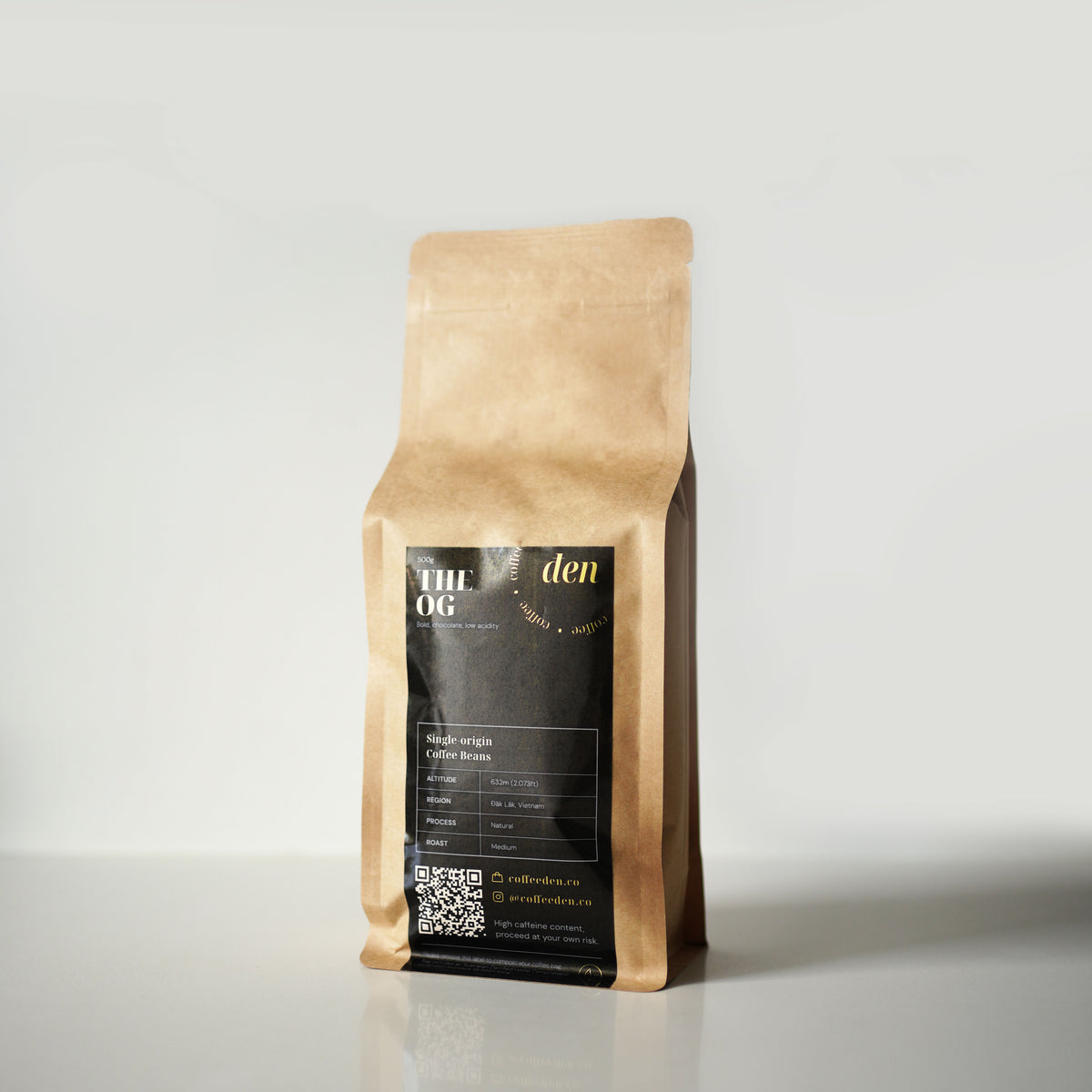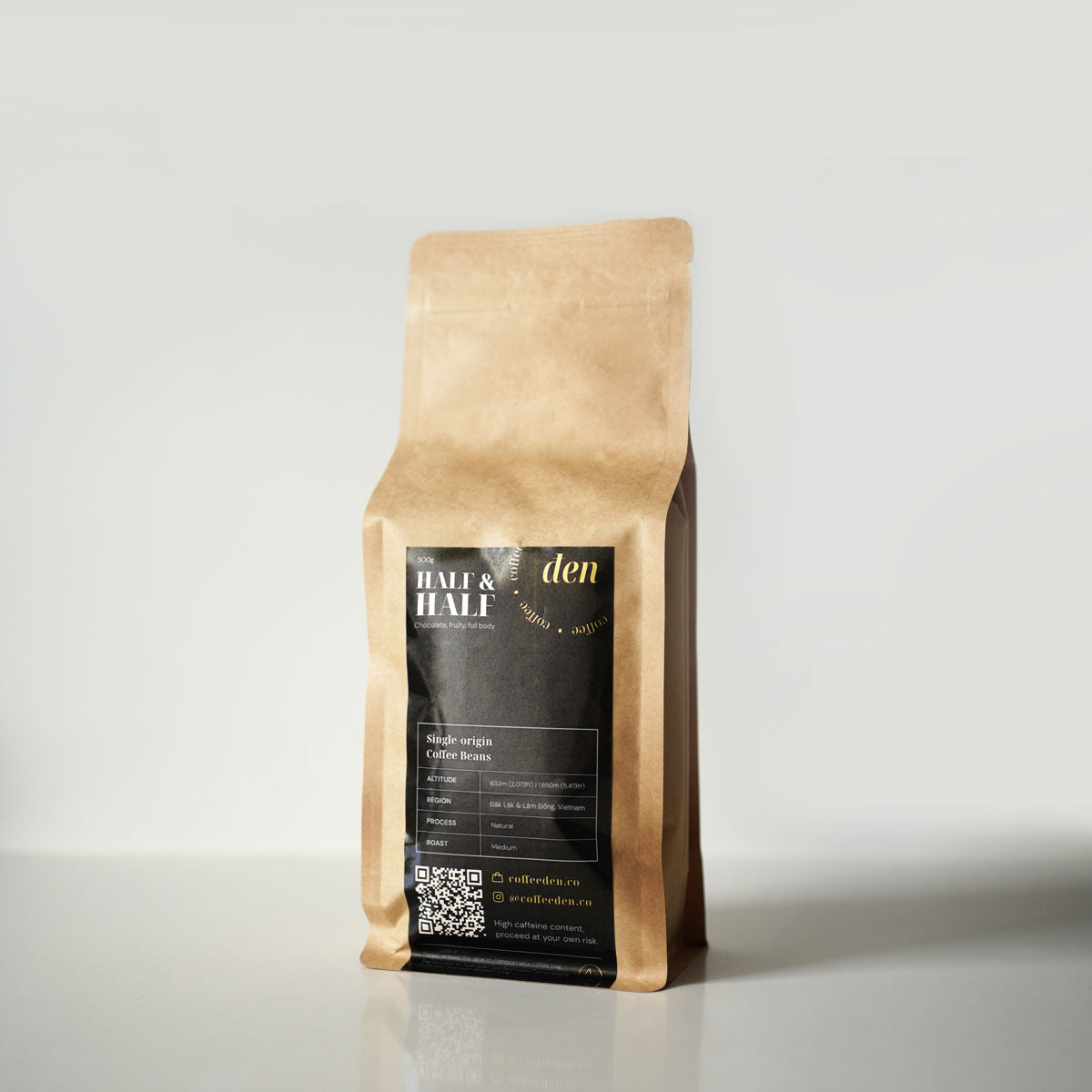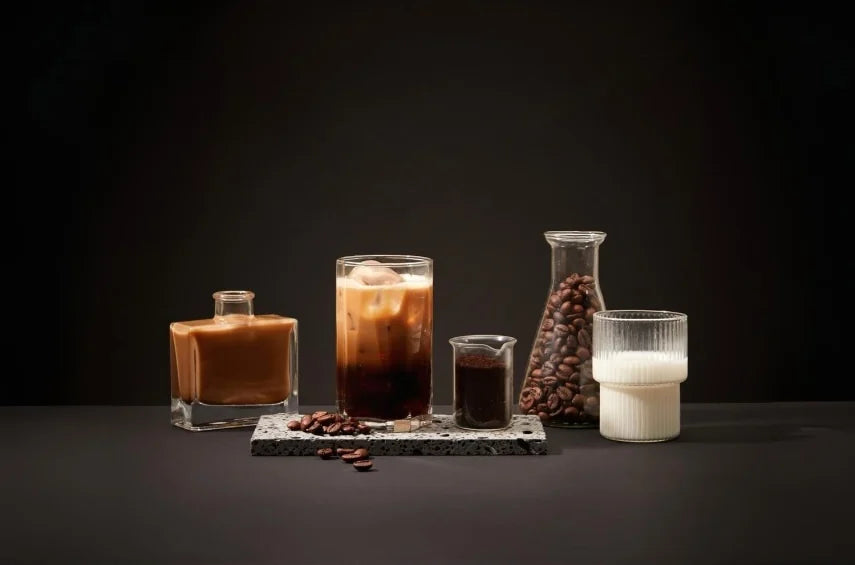A small, humble bean born in the misty highlands of Vietnam was once dismissed as harsh and bitter: the robusta coffee bean. Labelled as a second-rate bean in the global coffee industry, there was no hope for it to be known outside the country. How can something so bitter take over the global coffee industry? And yet, today, the robusta coffee bean is the backbone of Vietnam’s coffee identity. It fuels a culture that turns everyday coffee drinking into a ritual. Almost like a religious, shared experience for many.
The strong bean came from Đắk Lắk Province, the heart of Vietnam’s Central Highlands, where the farmers start the journey before dawn, tending to plants that thrive in nutrient-rich, red basalt soil. The robusta plant is resilient and prolific, qualities perfect for Vietnam to rise as the world’s second-largest coffee producer.

Before robusta’s rise, the French had introduced bourbon arabica beans from Yemen in the 19th century. Popular for their delicate acidity and fruity flavours, it was reserved for the upper class or a luxury sip for the elites, which made it more expensive. Meanwhile, the bold, bitter, and high-caffeine robusta bean matched the grit and endurance of the working class. It didn’t stop the Vietnamese from seeing its true value and potential.
By the late 20th century, a combination of government support and smallholder expertise, and economic boost necessity transformed robusta into a global commodity. Farmers changed their harvesting methods, optimising sun-drying and honey-processing techniques, and experimented with bean blends to balance their bitterness and aroma. The beauty of the robusta bean can be found in the purpose-driven cultivation brought by the Vietnamese farmers, a labour of love and persistence. Today, that resulted in the single-origin Vietnamese robusta beans that have the attention of cafes around the globe. Now everyone enjoys its chocolatey undertones, thick body, and unmatched strength.
The Bean That Shaped The Vietnamese Way of Life
The life of the bean extends beyond export and economics. In Vietnam, coffee is in their daily life, a cultural ritual as important as breakfast, or even breathing. The phin filter, a small metal drip filter, makes brewing into a slow, meditative act. Coffee grounds are placed inside, hot water is poured over, and then the drip begins. If you like to zone out or meditate, watching the coffee pour in drop by drop is a good excuse. Good things come to those who wait. For the Vietnamese, good coffee comes to those who wait for every drop. The slow drip is the point of the whole process, not an inconvenience.

Along the sidewalks, you can see locals sitting on low plastic stools, sipping cà phê sữa đá; robusta coffee mixed with condensed milk and ice. It’s a genius take on the strong, bold flavour of the robusta bean, balancing perfectly with the creamy sweetness, creating a drink both energising and indulging. Whispers and conversations dancing through the air, the hums from the scooters buzzing past, and life moving at the rhythm of the dripping of the filter; here, life with the classic Vietnamese coffee is good. Beans fuel the day and make everyone ready to conquer whatever happens next.
In the Vietnamese way of life and coffee culture, the bean dictates not only taste but ritual. Generationally owned coffee shops, street cafés, and bustling markets all revolve around the same humble ingredient. To maximise its flavour, the creativity around it evolved as well; egg coffee, coconut coffee, and other regional specialties all start with the same robusta bean, roasted and ground with care.
Why This Bean Matters
In an impatient world that’s obsessed with convenience and speed, the Vietnamese coffee bean reminds us not to be hurried. It encourages us to slow down, pause, and feel the connection to the land, the people behind every cup. Sustainability and ethical sourcing are also an integral part of the story as the local farmers and roasters work hard to preserve not just the crop but the communities that cultivate it.
From the Đắk Lắk highlands to your cup, a long and deliberate journey of the drip of the phin filter itself. It’s a story of resilience, adaptation, and pride, a reminder that even a bean once called harsh can become the heartbeat of a nation and a global symbol of strength and culture.





